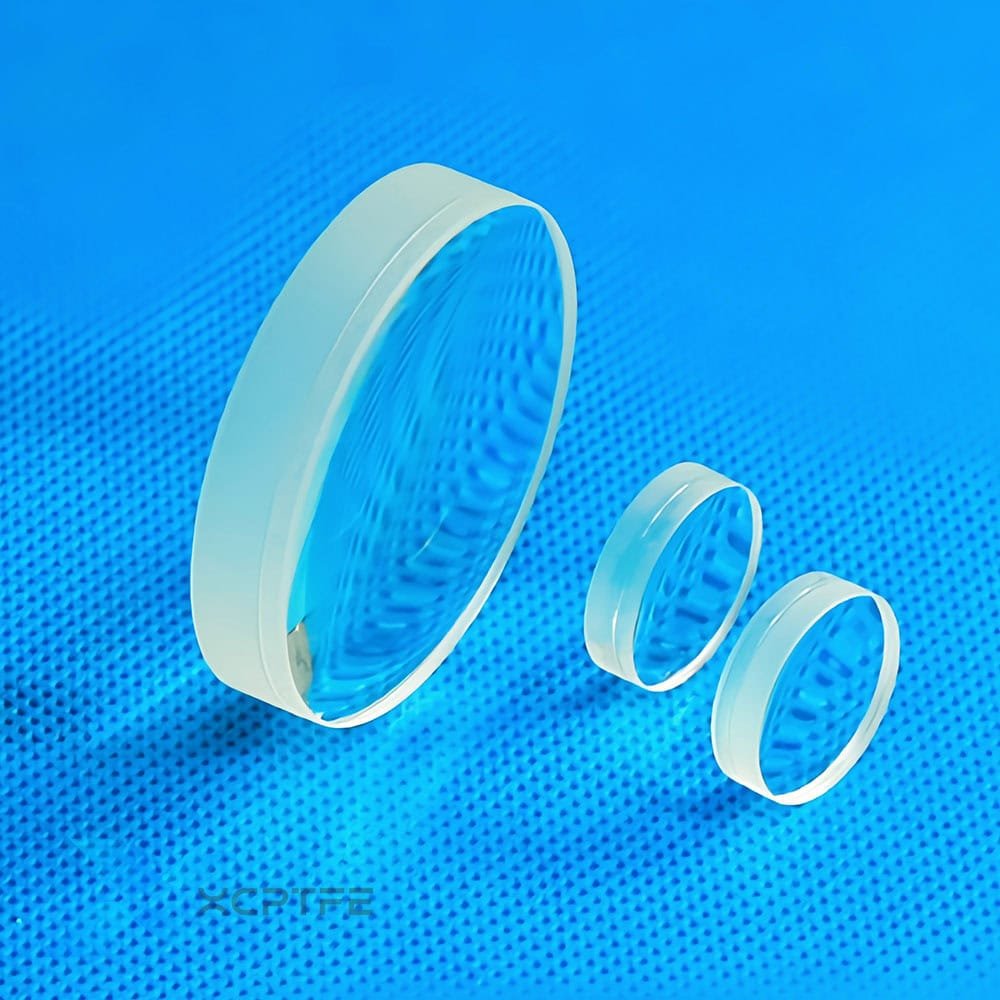Double-Convex Lens
Custom Fabrication
Custom Fabrication
Any question you want to know, just to contact email: cusoptics@micquartz.com.
What is Achromatic Doublet?

Achromatic dual lens /cemented doublet is a precision designed and glued composite lens composed of two different materials of optical glass (usually crown glass and flint glass). Its sole core mission is to correct chromatic aberration, thereby significantly improving the imaging quality of optical systems.
Features
Structure: Composed of two lenses bonded together. It is usually a combination of a low refractive index, low dispersion positive lens (convex lens) and a high refractive index, high dispersion negative lens (concave lens).
Material: The most classic combination is:
Crown Glass: Used as a positive lens element. Has a lower refractive index and lower dispersion (higher Abbe number).
Flint Glass: Used as a negative lens element. Has a high refractive index and high dispersion (low Abbe number).Structure: Composed of two lenses bonded together. It is usually a combination of a low refractive index, low dispersion positive lens (convex lens) and a high refractive index, high dispersion negative lens (concave lens).
Material: The most classic combination is:
Crown Glass: Used as a positive lens element. Has a lower refractive index and lower dispersion (higher Abbe number).
Flint Glass: Used as a negative lens element. Has a high refractive index and high dispersion (low Abbe number).Structure: Composed of two lenses bonded together. It is usually a combination of a low refractive index, low dispersion positive lens (convex lens) and a high refractive index, high dispersion negative lens (concave lens).
Material:
The most classic combination is:
Crown Glass: Used as a positive lens element. Has a lower refractive index and lower dispersion (higher Abbe number).
Flint Glass: Used as a negative lens element. Has a high refractive index and high dispersion (low Abbe number).
How does Achromatic Doublet work?
Color difference problem: Due to dispersion effect, lenses made of a single material (single lens) cannot converge light of different wavelengths (such as red and blue light) to the same focal point, resulting in blurred color edges in imaging, which is called color difference.
Correction mechanism:
A positive lens (crown glass) can focus light, but it can produce chromatic aberration, resulting in a shorter focal length for blue light and a longer focal length for red light.
Negative lenses (flint glass) emit light and also produce chromatic aberration, but their high dispersion characteristics make their ability to emit blue light much stronger than their ability to emit red light.
After cleverly combining the two, the chromatic aberration generated by the positive lens is almost precisely offset by the opposite chromatic aberration introduced by the negative lens. The result is that two specific wavelengths of light (usually red and blue) are corrected to the same focal point, greatly eliminating color edges and greatly improving image clarity and contrast.
Application
The achromatic dual lens /cemented doublet is the “heart” component of all mid to high end optical imaging systems.
Telescopes: Almost all modern astronomical telescopes and high-quality ground-based telescopes come standard with objective lenses.
Microscope: The objective and eyepiece of high-end microscopes widely use achromatic design to ensure clarity and accuracy of observation.
Photography and camera lenses: All camera lenses are composed of multiple sets of lenses, including achromatic lenses or lens groups based on their principles, which are the foundation for achieving clear photography.
Laser optical system: used to focus the laser beam and avoid the enlargement of the spot or energy dispersion caused by color difference.
Precision measuring instruments: used in equipment such as spectrometers and rangefinders that require high-precision optical paths.
Advantages & Limitations
Advantages:
Greatly reducing color difference is its most important and core advantage.
Improving imaging quality: Compared to a single lens, there has been a qualitative leap in resolution, sharpness, and contrast.
Reducing spherical aberration: Through the rational design of the surface, the dual lens can partially correct spherical aberration while correcting chromatic aberration.
High cost-effectiveness: Although more complex than a single lens, it has a lower cost compared to more advanced apochromat lenses, making it the perfect balance between performance and cost.
Limitations:
Achromatic doublet lenses typically only perfectly correct chromatic aberration for two wavelengths (such as F-line (blue) and C-line (red)). There may still be residual chromatic aberration (secondary spectrum) at other wavelengths.
Advanced alternatives: For applications that require extreme image quality, such as professional astronomical photography and high-end microscopy imaging, apochromatic lenses (Apochroma or APO) will be used. APO uses special ED (ultra-low dispersion) glass or fluoride crystals to correct three or more wavelengths, almost completely eliminating all visible color differences, but the cost is also extremely high.
Send Us A Message

